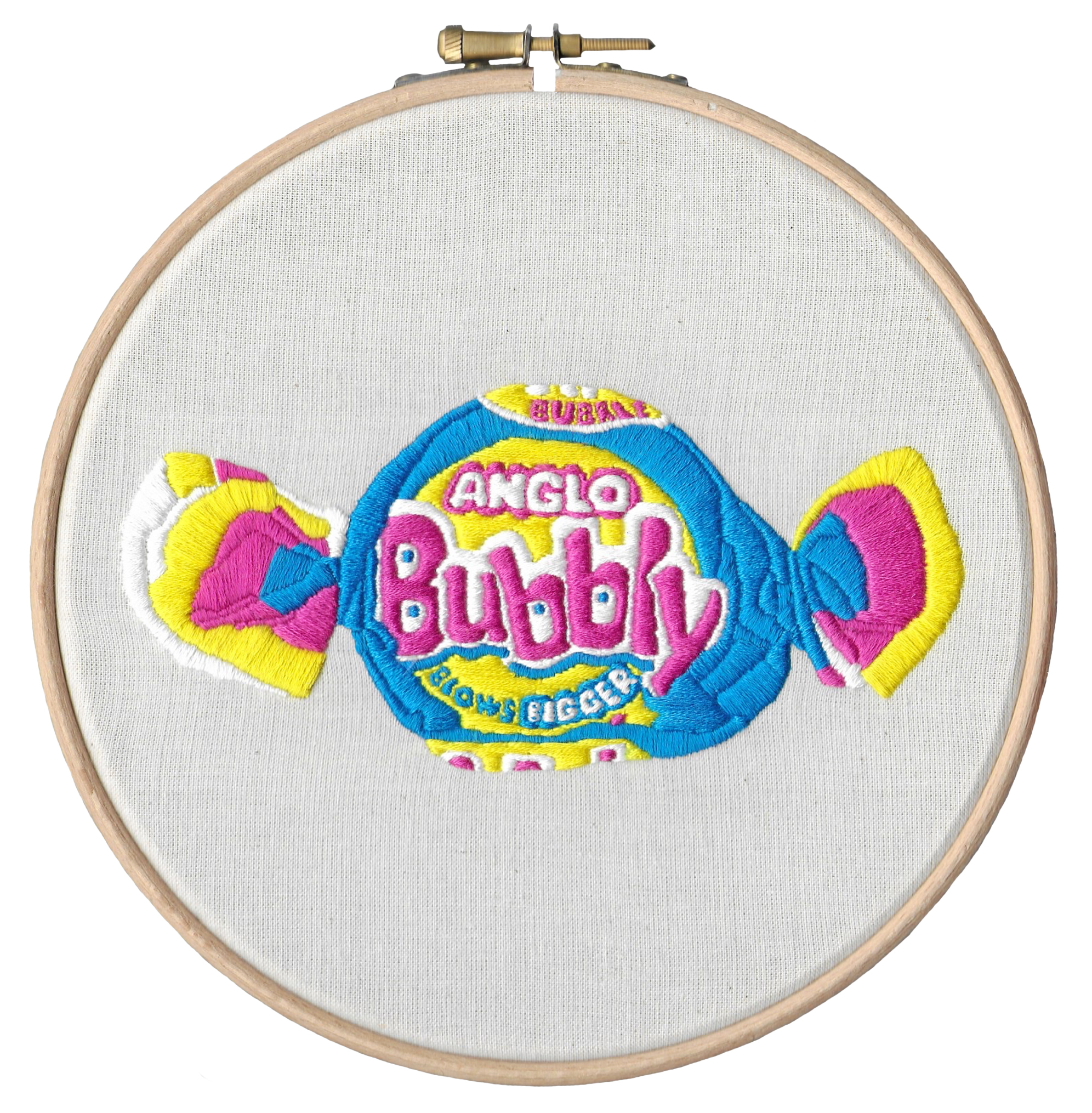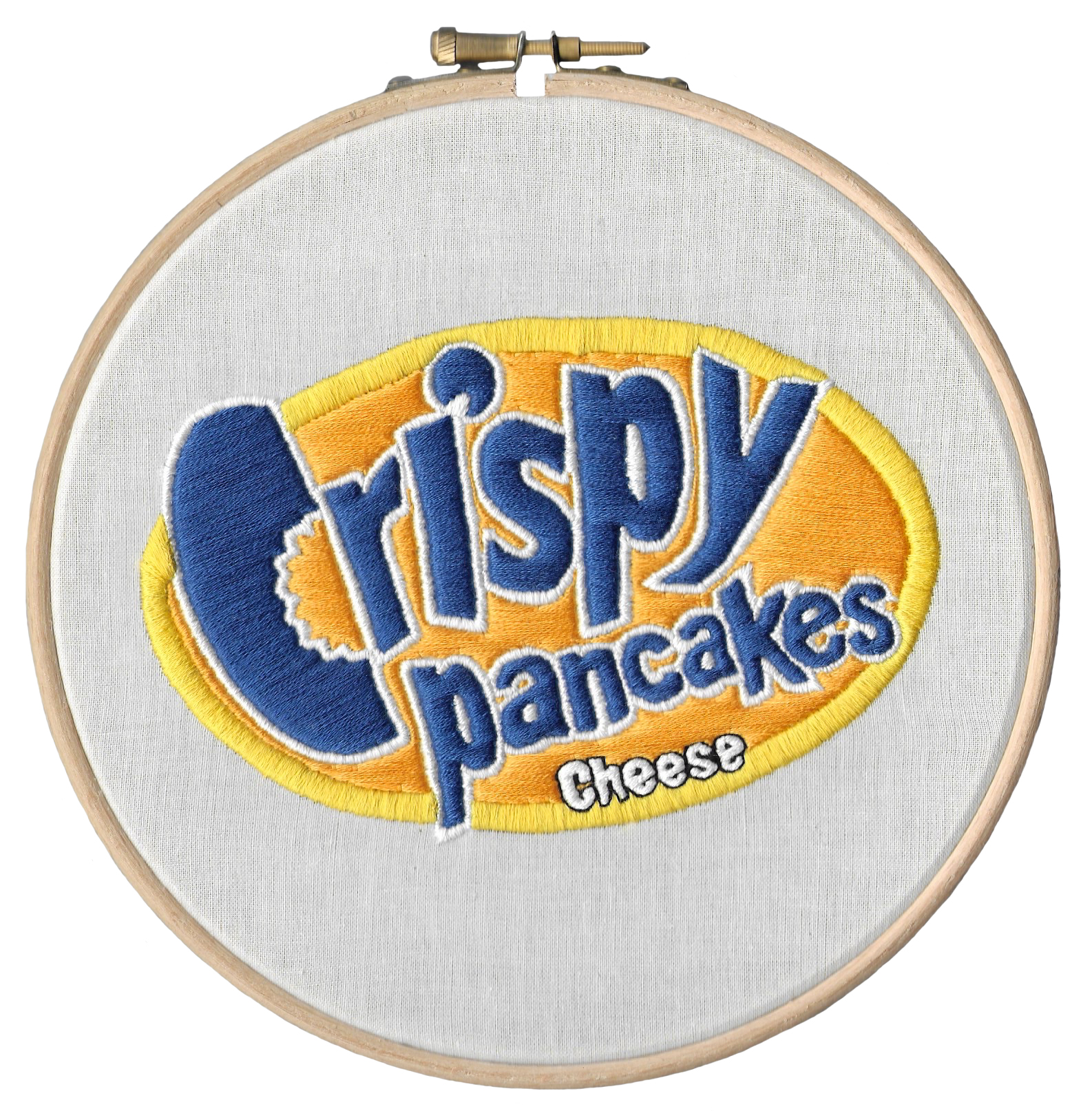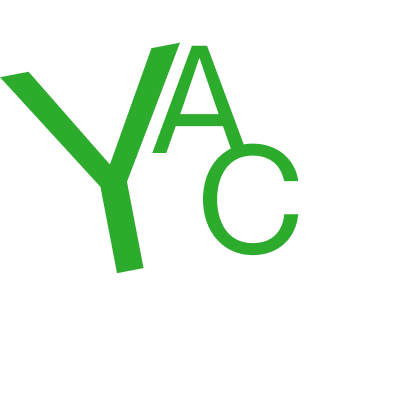Robyn Nichol
Interview by Pippa Eason
-
Published in February 2021
-
Hi Robyn! So glad I finally have the chance to talk to you about your work. I admire your energy when it comes to making art. Let’s keep this interview relaxed and informal as I aim to find out more…
Firstly, I wanted to ask about your background, I know you’re from West Yorkshire (like me!), but tell our readers about yourself, and a bit about how that has impacted the way you work.
I’m a twenty-five-year-old artist from Keighley, West Yorkshire and am currently living and working ten minutes down the road from where I grew up. Within my practice I focus on the themes of heritage, locality, and industry, aiming to capture a sense of Northern identity. I’ve grown up in a town that meant I was constantly surrounded by repurposed or derelict mills, as well as my grandma being an avid knitter, so I’ve always had some form of reference to the worsted textile industry around me. Both of these things definitely subconsciously fed into my practice, alongside the objects and brands around me that have shaped the aesthetic decisions in my work. For me, the main people that I think about when I make work is my grandma and grandad, and whether they could engage with it. I prefer seeing them both laugh at something that I’ve made than a theoretical conversation about it in a traditional gallery space.

In the terms of work I'm actually starting a project (it will probably be a year-two years long) with my boyfriend Jim putting together a publication of works made about Bradford and Keighley. It's collaborative as he publishes books but will also be making his own work alongside my own, and then there'll be some work we make together too. A lot of the ideas come from concepts I had in my second and final year of Uni but didn't have the skill set to execute properly. It's going to include things like remaking the Keighley Trades Council banner my dad carried on a protest, an embroidered wrestling vest centred around my family (this was originally a wall hanging) and some machine knitted pieces focusing on Bradford. I'm doing so much reading/research about Bradford and Keighley for it too. It's probably the most experimental I've been with my practice for three years maybe because I think I got stuck in my comfort zone haha!

Then I'm also doing a workshop series at South Square Centre focusing on their archive of Thorton and Bradford, and then another workshop as part of another project focusing on empowering young people in rural areas to initiate their own projects and to not feel like they have to move to or live-in metropolitan areas to succeed.
That’s such an eloquent description of your connection to the North, and how you’ve translated that into a fluent, fun and honest output. What has always drawn me to your work is your ability to engage people, way beyond the clinical walls of a gallery. That is so important. Also, being able to bring joy to the people that informed your choices in making the work feels like it in itself an intrinsic part of your work. The family connection to your work and the fact you work so close to where you grew up is perhaps why the work has such a natural authenticity.
And further still, having your families own experiences inform much of the work is endearing, and seeing you present Northern culture in all of your work certainly feels like home. Using tropes from Highschool in the early-mid 2000’s, and incorporating Yorkshire dialect into your work creates an anecdotal feel.
Living near home is very important to you, so in what specific ways does living in a non-metropolitan area benefit your work?
Thank you for being so kind Pippa! I’m really glad that all comes across in my work and that it’s doing what it’s supposed to in the terms of engagement outside of a gallery environment. I totally agree!

I think for me now that I’ve been back in Yorkshire for a year, after living in Manchester for a year previously, I can really tell the impact that it had on my work. I found that it was when I was living in a metropolitan area that I lost sight completely with the themes that I’m interested in and became very stuck in using the same materials and creating the same kind of work. I think this was also linked to not dedicating any time to research, but since moving back to West Yorkshire and being closer to my family, ideas seem to come to me a lot more organically. I’ve got a real pull to remake all of the work that I was making about Keighley and my family when I was at Uni now that I’m back here, so am going to rework all of these pieces throughout 2021.

I also have so much more everyday reference material around me, even with something as simple as family photos, which obviously I wasn’t able to source in the same way in a metropolitan area. I also now take photos on my phone of my work in the environments that it’s taken inspiration from, whether that’s the derelict section of Dalton Mill in Keighley or rural Yorkshire countryside. I hope to take photos of the remade Keighley Trades Council banner inside the section of Dalton Mill that’s still accessible. These photos aren’t professional or for anything in particular, they’re more just for myself, but they help me to consider whether a particular format or material is working. I’ve found that doing this is now crucial in leading on to new ideas and considering new ways to refine older ones.

I can feel the boundless energy of your work, even when I’m looking at a tiny phone screen staring at Instagram. There’s something so comforting about seeing you embrace things that many people will remember from childhood in your practice. A metropolitan place feels like such a stark contrast to those symbols of a Yorkshire childhood. Manchester can be a difficult place to settle into, mainly because it feels much bigger than anywhere in Yorkshire. And I think there is something more poignant about you taking those photos not for something specific. Just taking them for yourself.
As large sections your work makes a commentary on better times gone by, namely your childhood years, would you say you directly use memory as a tool for making?
I definitely incorporate using memory as a tool when I make work. I think this tends to show more in the embroidery pieces that I make about being at school, or text pieces I’ve made e.g. my ‘There’s a choc ice int freezer’ hoop about my grandma. I think my incorporation of memory as a tool still comes from when I discovered Louise Bourgeois when I was making feminist art back in 2014. I thought her use of memory, particularly in her textile books, was amazing and very sensitively thought out. Obviously, there’s a complete difference in subject matter but that depiction of things personal to you in the way that you feel is most appropriate, whether that’s being vulnerable through wording and material choices or using humour and bright aesthetics, is something that definitely had a big impact on me. When I was at uni I actually made a hand painted and hand embroidered textile book inspired by her, which depicted my thoughts and feelings about my flat mate having committed suicide. Again, a completely different kind of subject matter to the work I make now, but I think this was my first piece of work where I was using memory to work through processing something, which is half of the reason I make a lot of embroidery pieces as I think the repetitive process allows you to do this.

Your making process feels highly considered, with the exquisite detail, but then it is inherently playful. Taking me right back to the 1990’s where things seemed simpler. The humour and aesthetics are the first things that come to mind when thinking about your work. You use the things around you very well to culminate in visual story telling.
What are your upcoming plans for your work? Tell us about what we can expect (Covid permitting of course!).
I’m currently working on a micro commission for Bradford’s City of Culture 2025 bid, six artists have been approached so you’re not guaranteed the job but I’m finding even as a small paid gig it’s informing the body of work I was already making, and it’s been nice to see how these existing ideas can be transferred over to a mural format. I’m also going to be in a mini show in March at The Margate School as part of POW! Festival for International Women’s Day, it’s a window curated by Rebecca Strickson centred around how protest has been used within textiles. I love Rebecca’s work and her outlook so I’m buzzing for that!

And then I’m also working on some new stuff for my shop including chippy tea enamel key rings and some mini appliqué wall hangings, as I’ve been pushing myself to experiment with this process recently. I hope to recreate some of my embroidery hoops from 2019 as wall hangings to make them much more affordable than a commission or made to order piece would be.
That all sounds brilliant. Congrats! I’m excited to see the outcomes for the POW! Project. I’ll keep an eye out for those embroidery hoops and wall hangings.
It’s been a good chat Robyn, I feel I have learnt something new about your practice, ways of working, and process. I feel your personality is very important to your practice, whilst also getting visual semiotic messages across, you let the viewer into a part of your soul and life. It feels like you give us a small insight into your memory bank, into the things that you truly love, or have loved before. Hints at your hometown and politics are made so thoughtfully. You are positive, not trying to over theorize your work, like many artists do. The energy and joy from your work is making ripples in many different scenes, and I feel that’s an important and needed thing right now. Thank you for talking so honestly and candidly about your work Robyn.

-
If you like this why not read our interview with Robin Broadley
-
© YAC | Young Artists in Conversation ALL RIGHTS RESERVED
